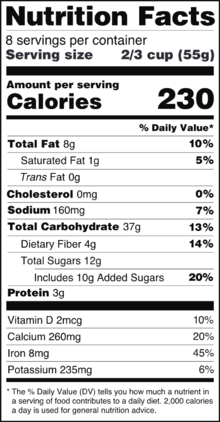America’s Food Policy Timeline

For the majority of his life, Dr. Harvey Washington Wiley fought for unadulterated food and producer transparency. It’s been eighty-nine years since his death in 1930, but his legacy has lived on as food safety and labeling requirements have changed and improved with more customer concern and transparency. Here is America’s food policy timeline.
1933:
- Senator Royal S. Copeland of New York introduces a bill to amend the Pure Food and Drug Act of 1906
- The FDA opens its “Chamber of Horrors” which “displayed some of the rankest violations of public safety in the promotion of various drugs, cosmetics, and therapeutic devices (Natenberg 110)Eyelash dye that resulted in blindness
- Hair dyes that caused systemic poisoning
- Other dangerous elixirs, radium waters, and liniments
1937: 107 people die from an Elixir of Sulfanilamide which was mixed with diethylene glycol and never tested for toxicity
1938: Senator Copeland’s Food, Drug, and Cosmetic Act passes, making it so “Any food, drug, therapeutic device, or cosmetic that was impure, dangerous, or misbranded could be seized and condemned” (110)
1949: FDA publishes the first “black book” which provided guidance and procedure for the appraisal of the toxicity of chemicals in food
1950: Congress authorizes hearings on Chemical in Food Products under House Resolution Number 323 (continuing into 1951 under House Resolution number 71)
- Authorizes standards of identity, quality, and fill-of container
- Authorizes factory inspections
- Delaney Committee starts inspecting chemicals in foods and cosmetics
1953: Factory Inspection Amendment passes. This amendment clarifies previous laws and requires the FDA to give manufacturers written reports of the conditions observed during inspections and analyses of factory samples
1954: Miller Pesticide Amendment set a pesticide safety limits
1958:
- Food Additives Amendment is enacted, requiring manufacturers of new foods to establish safety of their products
- Delaney proviso prohibits approval of any additives that are shown to induce cancer ineither humans or animals
- FDA releases a report of nearly 200 substances that are generally recognized as safe
1960: Color Additive Amendment is enacted, requiring manufacturers to establish safety of color additives in foods, drugs, and cosmetics
1962: Consumer Bill of Rights is proposed by President John F. Kennedy which includes that consumers have a right to safety and information and right to be heard
1966: Fair Packaging and Labeling Act is passed, requiring honest and informative labels
1982: FDA publishes the Red Book, which is an updated version of the Black book, also known as the Toxicology Principles for the Safety Assessment of Direct Food Additives and Color Additives in Food
1990: Nutrition Labeling and Education Act is passed
- Requiring all packaged foods to bear nutrition labeling and all health claims for foods to be consistent with the first standards set by the Secretary of Health and Human Services
- Mandating nutrition labeling on food products- no longer voluntary
- Requiring nutrition labeling on imported food as well
- Nutrition Label information based on serving size not package size
- Sets standard and violations that states were not required to enforce
- Defines difference between butter, margarine, and spread
- Defines difference between fruit drink and fruit juice

1996: Food Quality Protection Act- amends the Food, Drug, and Cosmetic Act of 1938, eliminating application of the Delaney proviso to pesticides
2003: Requiring labels to include trans fat content
2004: Passage of Food Allergy Labeling and Consumer Protection Act which requires the labeling of common allergens: peanuts, soybeans, cow’s milk, eggs, fish, crustacean shellfish, tree nuts, and wheat.
2010: Food Safety Modernization Act
- Requires Food Safety Plans for all FDA firms
- Domestic and Foreign food facilities must re-register every two years
- Expanding the scope of FDA’s authority to detain food and inspect records
- Establishing standards for consumed-raw ag produce that pose high-risk to consumers
- Regulations on food transportation
- Tracking and tracing food
- Mandatory recall
- Decontamination plan
2016: Congress amends the Agriculture Market Act authorizing the USDA AMS to establish regulations for labeling foods containing GMOs
Natenberg, Maurice. The Legacy of Doctor Wiley. 1957
Photo Source: 80 Years of the Federal Food, Drug, and Cosmetic Act | FDA
Olivia Poches
Student Assistant, Go Big Read Office